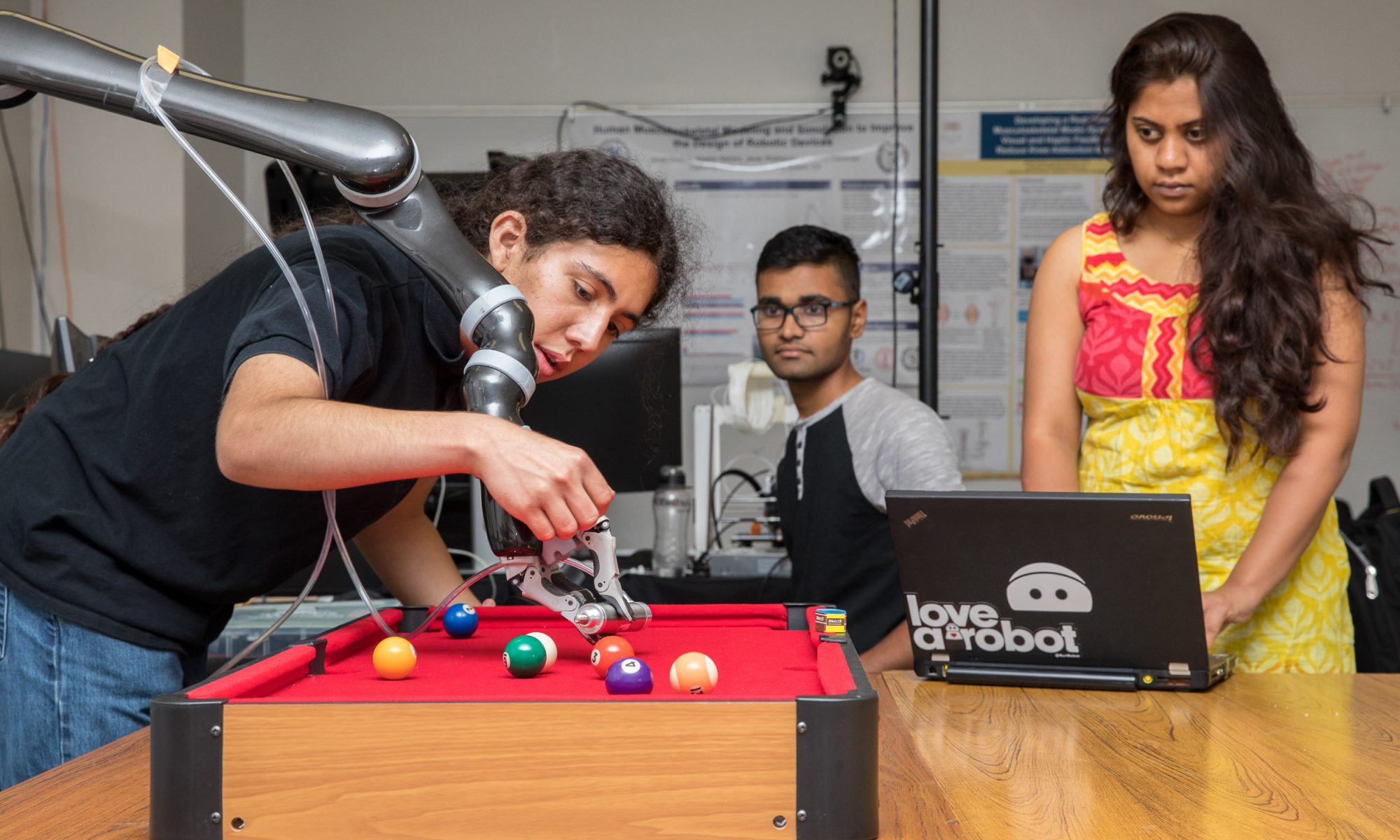 A multidisciplinary team from CSULB’s College of Engineering will be back competing in RASC-AL Robo Ops again this year. The CSULB team was among eight finalists selected to design and build a rover and travel to NASA Johnson Space Center in Houston to test its performance on Mars-like terrain.
A multidisciplinary team from CSULB’s College of Engineering will be back competing in RASC-AL Robo Ops again this year. The CSULB team was among eight finalists selected to design and build a rover and travel to NASA Johnson Space Center in Houston to test its performance on Mars-like terrain.
Sponsored by NASA and managed by the National Institute of Aerospace (NIA), RASC-AL—short for Revolutionary Aerospace Systems Concepts-Academic Linkage—challenges multidisciplinary graduate and undergraduate teams to design and build a planetary rover and demonstrate its ability to perform tasks in the Rock Yard, an environment that simulates the rough terrain of the moon and Mars.
The competition attracts top engineering schools from across the country. Last year—the first time a CSULB proposal was submitted—the team was also among the eight chosen finalists. Aerospace engineering assistant professor Praveen Shankar is the team’s advisor.
The biggest challenge is that the rovers must be teleo-controlled to simulate astronaut-guided rover explorations. During the competition, cameras will transmit video from rovers to universities’ “mission-control centers” and the public. The video feeds will serve as the rovers’ eyes and ears.
The May 2016 Rock Yard segment of the RASC-AL Exploration Robo-Ops contest is worth nearly two-thirds of each team’s final score. Teams also earn points for developing education and outreach materials.
Being selected to participate is the first milestone in the nine-month development and testing effort. Teams must complete a 15-page technical paper outlining their design, testing, and decision-making strategy, and present their rover design to judges in a poster session that mimics NASA design reviews.
The other finalist teams selected are from University of California, Berkeley; University of Maryland, College Park; University of Buffalo in New York; University of Oklahoma, Norman; University of Utah, Salt Lake City; University of Wyoming, Laramie; and West Virginia University, Morgantown.
Pat Troutman, human exploration strategic analysis lead at NASA’s Langley Research Center in Hampton, Virginia, and Shelley Spears at NIA oversee the contest.
“In 2016, we’ve continued to push the envelope of their capabilities by adding to the complexity of the competition. When these eight teams show up at the 2016 Robo-Ops Competition, we fully expect to see prototypes that can provide innovative solutions to some of the challenges that future tele-operated rovers will face,” said Troutman.
The competition focuses primarily on robotics, but it’s also tied to NASA’s goal to send humans to Mars. During the design process, students are encouraged to evaluate technologies that could help humans and robots work together better on the Red Planet.
By participating in this challenging hands-on competition, students receive real-world experience that parallels what NASA professionals are doing today. Robo-Ops contributes to NASA’s efforts to develop a highly skilled workforce, while also obtaining innovative ideas from some of the country’s best student minds.

